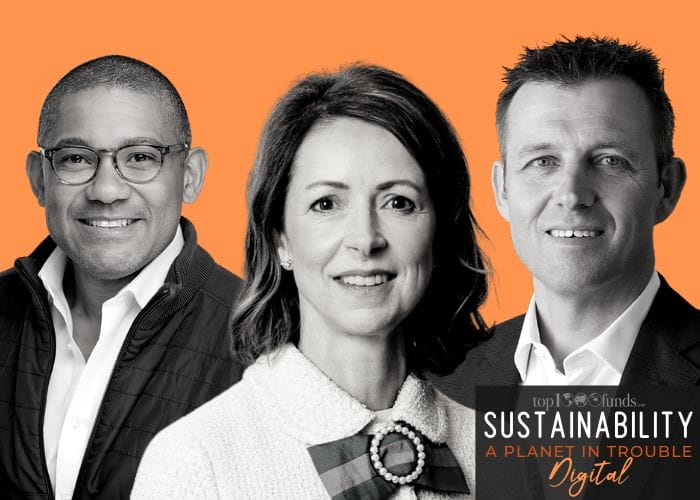Achieving diversity requires data, new recruitment practices and nurturing inclusion. And the financial industry must get its own house in order to better put pressure on investee companies.
“Inclusivity is more important than diversity. Don’t underestimate how hard it is to understand what an inclusive culture looks like,” David Neal, chief executive at IFM Investors, told delegates at the “Sustainability Digital: A Planet in Trouble” last week.
Neal, who has led the the investor-owned fund manager was citing a key challenge inherent in solving the diversity problem within financial services organisations.
He was speaking alongside Helena Morrissey, chair of the Diversity Project and founder of the 30% Club which seeks at least 30% representation of women on all boards and C-suites globally, and Jason Lamin, founder and chief executive of fintech Lenox Park Solutions. They agreed that hiring diverse employees must be accompanied by inclusivity so that people feel able to voice their opinions and be part of the corporate culture.
Delegates heard how granular data helps reveal where firms are losing diversity in their workforce, enabling companies to “zero in” on challenges like retention. Elsewhere, asset owners need to hone clear and consistent messages and view tackling diversity in the context of change management overseen by strong line managers.
Data: the challenge and the solution
More asset owners are drawing on high end data to increase gender diversity, said Lamin visible in the growing number of investors using Lenox Park’s scoring and methodology data over the last year. Using metrics that assesses and measures factors like board diversity amongst investee companies and asset managers, asset owners can tilt allocations to those that score highest and “move the needle.”
He says that assessing, managing and changing diversity, equity and inclusion is set to become the data issue of the 2020s, as investors turn their attention to the power they have to advocate for change in the companies they invest in, and the firms that manage their money.
People have discussed the importance of diversity for decades and everyone understands the social good inherent in diversity. Yet the catalyst for change has only come since investors started looking at diversity through a risk lens.
“This has provided a different motivational factor,” said Lamin, citing diversity risks like group think, the inability to attract the best talent, or the reputational risk that comes with discrimination or staff harassment.
IFM’s Neal reiterated the risk of group think and the importance of “different life experiences” to help solve “complex problems.”
Moreover, the COVID-19 pandemic and growing evidence that the impact of the pandemic is more keenly felt amongst women, requires a “big” push.
“If we are going to contribute capital and build back better, we have to pay attention to diversity and inclusion,” he said.
IFM is working with researchers at the University of Sydney for insight on investing through a gender lens. Neal told delegates that changing the fund manager’s investment process requires “asking the right questions.”
When David Neal was chief executive of the Future Fund, a position he held before joining IFM last year, his team engaged in a mapping of the cognitive diversity of the group.
Now he has expressed his hope that investor appetite to address diversity will gather the same kind of momentum now seen in climate where he noted a similarly “slow response to clear evidence.”
“I am hoping momentum will also build around investing with a gender lens,” he said.
Neal added that asset owners’ ability to push firms on gender equality depends on the ownership level of the investee company.
“One hundred per cent ownership gives a different level of control,” he said. “It makes it easier to build an inclusive culture and set up the right employment policies to encourage women and minorities and make sure the board and executive level are diverse.”
“We try and get into the organizations we invest in as deep as possible – in the same we way we manage issues ourselves, in our own organization.”
Getting our own house in order
Panellists stressed the importance of asset owners and the wider investment community ensuring diversity within their own ranks before they take the message to investee companies.
“We have to get our own house in order,” said Morrissey.
“We can’t go around lecturing people when the financial industry is not diverse.”
She urged investors to change recruitment processes and rely on data. For example, data reveals when and why diverse candidates leave a company or if diverse candidates are being promoted. She also highlighted the importance of grass roots initiatives around diverse recruitment and encouraging people who might not have considered a career in finance into the industry.
“We need their representation,” she said. As well as building diversity in early careers, she said more needs to be done around return-ship and encouraging women back into work.
No more all white boards
Panellists also sounded a note of optimism and pointed to recent progress. Like the fact there are no all-male boards left across the FTSE 350 in a victory for the 30% Club.
“We are thrilled with the progress around more women on boards,” said Morrissey who observed how men are helping push gender diversity in new trends in allyship. This has pushed the conversation beyond gender equality and the boardroom she said, noting “there are so many underrepresented groups.”
Progress in other areas like racial diversity will also require a “painful journey” that “takes a while” and involves “steps back,” she said.
Morrissey also reflected on how the 30% club would have failed if it had begun with a broad scope. The organization’s success is rooted in its narrow focus on female boardroom representation, she said.




